International team detected radio bubbles with South Africa’s MeerKAT telescope.
A gigantic, balloon-like structure has been hiding in plain sight, right in the center of our own galaxy.
An international team of astronomers, including Northwestern’s Farhad Yusef-Zadeh, discovered the structure, which is one of the largest ever observed in the Milky Way’s center. The newly spotted pair of radio-emitting bubbles reach hundreds of light-years tall, dwarfing all other structures in the central region of the galaxy.
The team believes the enormous, hourglass-shaped structure likely is the result of a phenomenally energetic burst that erupted near the Milky Way’s supermassive black hole several million years ago.
“The center of our galaxy is relatively calm when compared to other galaxies with very active central black holes,” said Ian Heywood of the University of Oxford, the first author of the study. “Even so, the Milky Way’s central black hole can — from time to time — become uncharacteristically active, flaring up as it periodically devours massive clumps of dust and gas. It’s possible that one such feeding frenzy triggered powerful outbursts that inflated this previously unseen feature.”
Using MeerKAT
Why couldn’t we see such a massive figure before? We simply did not have the technology. Until now, the enormous bubbles were hidden by extremely bright radio emissions from the center of the galaxy. For this work, the team used the South African Radio Astronomy Observatory (SARAO) MeerKAT telescope, the largest science project in Africa. The radio light seen by MeerKAT can easily penetrate the dense clouds of dust that block visible light from the center of the galaxy.
This is the first paper detailing research completed with MeerKAT’s full 64-dish array since its launch in July 2018.
More turbulent and unusually active compared to the rest of the Milky Way, the environment surrounding our galaxy’s central black hole holds many mysteries. Northwestern’s Yusef-Zadeh, a senior author of the paper, has dedicated his career to studying the physical processes that occur in the Milky Way’s mystifying center.
In the early 1980s, Yusef-Zadeh discovered large-scale, highly organized magnetic filaments in the center of the Milky Way, 25,000 light-years from Earth. While their origin has remained an unsolved mystery ever since, the filaments are radio structures stretching tens of light-years long and one light-year wide.
“The Milky Way’s central black hole can — from time to time — become uncharacteristically active, flaring up as it periodically devours massive clumps of dust and gas. It’s possible that one such feeding frenzy triggered powerful outbursts that inflated this previously unseen feature.” — Ian Heywood
“The radio bubbles discovered with MeerKAT now shed light on the origin of the filaments,” Yusef-Zadeh said. “Almost all of the more than 100 filaments are confined by the radio bubbles.”
Researchers believe the close association of the filaments with the bubbles implies that the energetic event that created the radio bubbles also is responsible for accelerating the electrons required to produce the radio emission from the magnetized filaments.
The team of astronomers on this project represents 15 institutions, including Northwestern, Oxford, the South African Radio Astronomy Observatory in Cape Town, and the National Radio Astronomy Observatory in Virginia.
The research paper appears in the journal Nature.
For more on this discovery, read Staggeringly Powerful Event Occurred Near Center of the Milky Way.
Reference: “Inflation of 430-parsec bipolar radio bubbles in the Galactic Centre by an energetic event” by I. Heywood, F. Camilo, W. D. Cotton, F. Yusef-Zadeh, T. D. Abbott, R. M. Adam, M. A. Aldera, E. F. Bauermeister, R. S. Booth, A. G. Botha, D. H. Botha, L. R. S. Brederode, Z. B. Brits, S. J. Buchner, J. P. Burger, J. M. Chalmers, T. Cheetham, D. de Villiers, M. A. Dikgale-Mahlakoana, L. J. du Toit, S. W. P. Esterhuyse, B. L. Fanaroff, A. R. Foley, D. J. Fourie, R. R. G. Gamatham, S. Goedhart, S. Gounden, M. J. Hlakola, C. J. Hoek, A. Hokwana, D. M. Horn, J. M. G. Horrell, B. Hugo, A. R. Isaacson, J. L. Jonas, J. D. B. L. Jordaan, A. F. Joubert, G. I. G. Józsa, R. P. M. Julie, F. B. Kapp, J. S. Kenyon, P. P. A. Kotzé, H. Kriel, T. W. Kusel, R. Lehmensiek, D. Liebenberg, A. Loots, R. T. Lord, B. M. Lunsky, P. S. Macfarlane, L. G. Magnus, C. M. Magozore, O. Mahgoub, J. P. L. Main, J. A. Malan, R. D. Malgas, J. R. Manley, M. D. J. Maree, B. Merry, R. Millenaar, N. Mnyandu, I. P. T. Moeng, T. E. Monama, M. C. Mphego, W. S. New, B. Ngcebetsha, N. Oozeer, A. J. Otto, S. S. Passmoor, A. A. Patel, A. Peens-Hough, S. J. Perkins, S. M. Ratcliffe, R. Renil, A. Rust, S. Salie, L. C. Schwardt, M. Serylak, R. Siebrits, S. K. Sirothia, O. M. Smirnov, L. Sofeya, P. S. Swart, C. Tasse, D. T. Taylor, I. P. Theron, K. Thorat, A. J. Tiplady, S. Tshongweni, T. J. van Balla, A. van der Byl, C. van der Merwe, C. L. van Dyk, R. Van Rooyen, V. Van Tonder, R. Van Wyk, B. H. Wallace, M. G. Welz and L. P. Williams, 11 September 2019, Nature.
DOI: 10.1038/s41586-019-1532-5

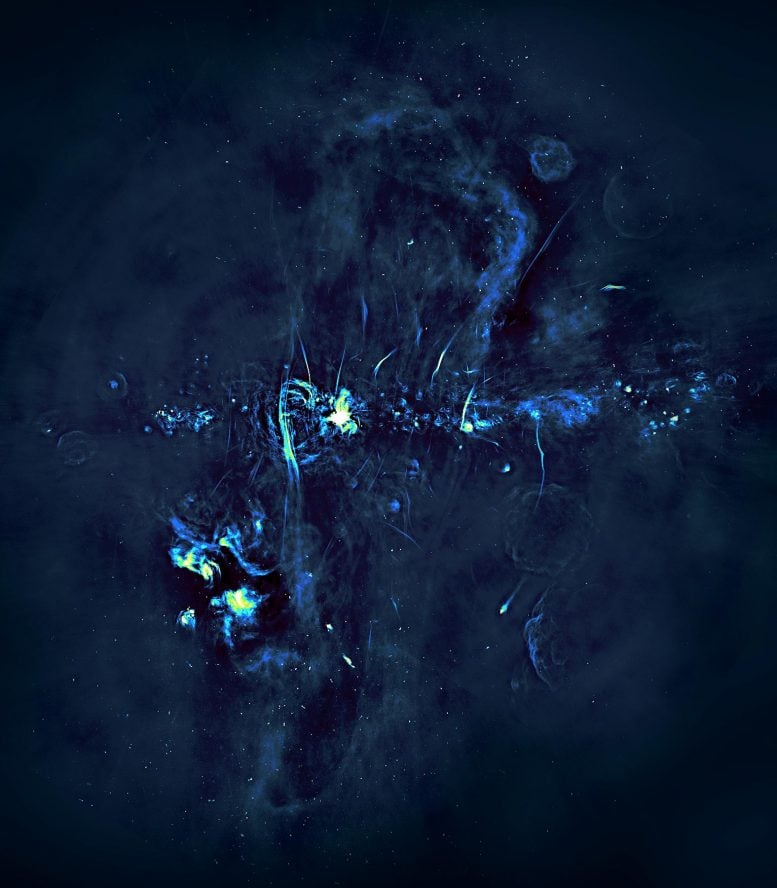
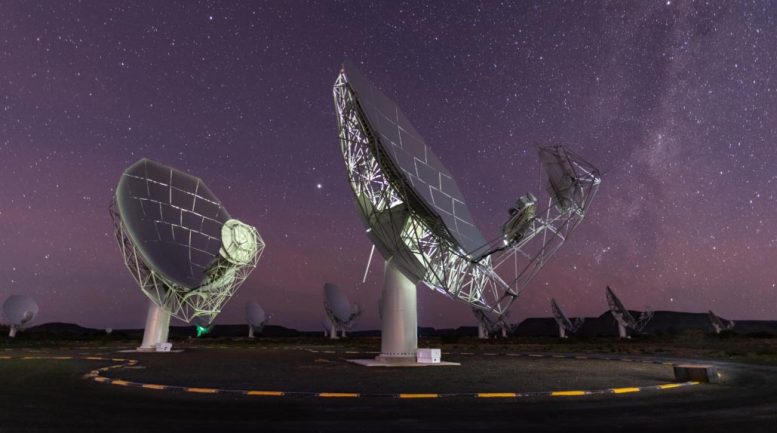
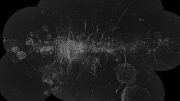
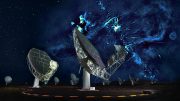


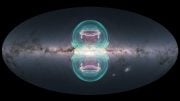
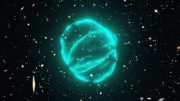
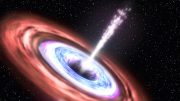
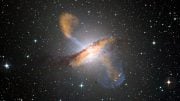
Seriously? 99 authors? Assuming I counted correctly (who could fault me if I didn’t?).
The electromagnetic interaction is mediated by the constant exchange of photons from one charged object to another. The magnetic field is really just a classical approximation to the photon-exchange picture. In a moving reference frame, a magnetic field appears instead as a combination of a magnetic field and an electric field, so electric and magnetic fields are made of the same “stuff” (photons).
Wherein the creation of matter, as a whole is composed of ordinary matter, or positive density matter, and dark matter, or negative density matter. It is a process that maintains the concept of retaining a zero sum net gain, by redistributing dark energy into complementarily paired positive and negative density matter. As previously commented of black holes, and the event horizon boundary, matter, as a whole, is disintegrated as it interacts with the event horizon of the black hole. As ordinary/positive mass/matter is ‘squeezed’ upon the gravitational acceleration of the black hole, liken to the spaghettification effect. This squeezing of matter, as a whole, changes to allow for its disintegration via transmutation and the massive release of photons due to alpha decay and beta decay. Subsequently when this complementary relationship is severed, ordinary matter is disintegrated and discarded out back into the cosmos, leaving dark matter to remain as a displacement in space-time. This is what happens when matter, as a whole, is separated upon the event horizon of a black hole.
So it is not a big leap to hypothesize that the massive release of high energy photons, upon the disintegration of ordinary matter, would engender fields (or bubbles) of electromagnetic energy outside the event horizon of black holes. This nuclear transmutation provides for a gargantuan quantity of electromagnetic energy swirling near our galaxy’s central black hole.